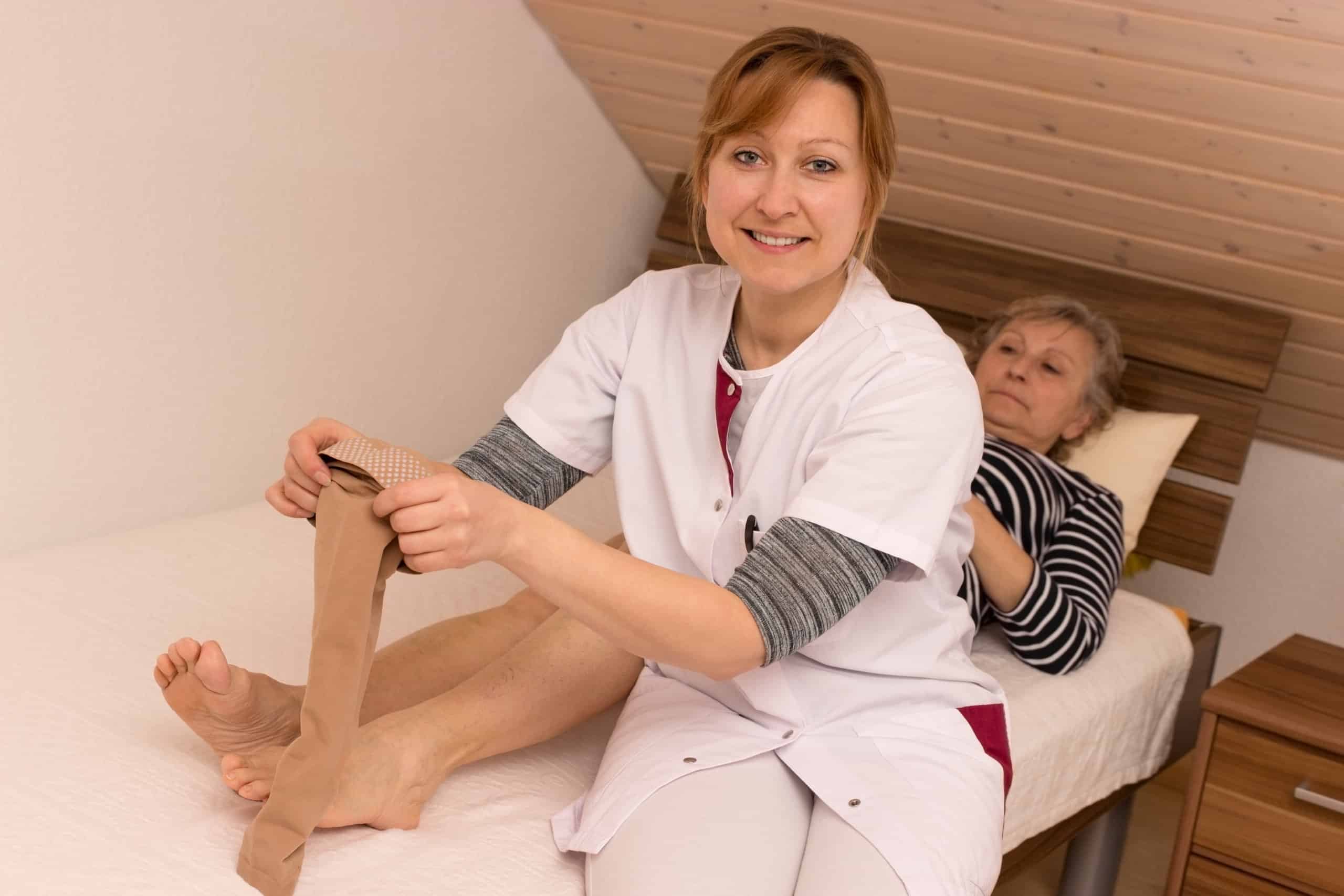Shockwave Therapy: 4 Valuable Questions That Will Help You Avoid Regrets
If you are considering an investment in shockwave therapy for your clinic, you are certainly not alone. Shockwave is one of the most popular upgrade options being considered by clinic owners these days despite its ostensibly steep cost. However, when one comes to recognize the wide range of conditions that can be treated by these units and the typical cost of a therapy session, the price becomes much easier to accommodate.
In this article, we will answer 4 important questions about shockwave therapy. These will include how it works, the various types of therapy and the conditions it can typically treat.
What Is ShockWave Therapy & How Does It Work?
Shockwave therapy, also known as extracorporeal shockwave therapy (ESWT), is a non-invasive medical treatment that uses high-energy acoustic waves to stimulate healing and promote tissue regeneration in various musculoskeletal conditions.
Here’s how shockwave therapy works:
- Mechanism of Action: Shockwave therapy works by delivering mechanical pressure pulses, or shockwaves, to the affected area of the body. These shockwaves propagate through the tissues, creating microtrauma and triggering a cascade of biological responses that stimulate the body’s natural healing processes.
- Stimulating Blood Flow: One of the primary effects of shockwave therapy is the stimulation of blood flow to the targeted tissues. The shockwaves cause the release of angiogenic factors, which promote the formation of new blood vessels (angiogenesis). Improved blood circulation enhances oxygen and nutrient delivery to the injured tissues, facilitating tissue repair and regeneration.
- Reducing Pain and Inflammation: Shockwave therapy also has analgesic and anti-inflammatory effects. The shockwaves disrupt pain signals, reduce the release of pain-causing substances, and modulate the activity of pain receptors in the affected area. Additionally, shockwave therapy helps suppress inflammation by inhibiting the production of pro-inflammatory cytokines and promoting the release of anti-inflammatory mediators.
- Promoting Tissue Regeneration: By inducing controlled microtrauma to the tissues, shockwave therapy stimulates the production of growth factors and cytokines, which play key roles in tissue repair and regeneration. This leads to the formation of new collagen fibers, improved tissue elasticity, and enhanced structural integrity of the treated area.
- Clinical Applications: Shockwave therapy is commonly used in the treatment of various musculoskeletal conditions, including tendinopathies (such as plantar fasciitis, Achilles tendinopathy, and tennis elbow), calcific tendinitis, bone fractures, stress fractures, and non-healing wounds. It is also being investigated for its potential therapeutic benefits in other medical fields, such as urology (for conditions like erectile dysfunction and Peyronie’s disease) and orthopedics (for conditions like avascular necrosis of the hip).
Overall, ESWT offers a safe, non-invasive, and effective treatment option for patients suffering from a range of musculoskeletal and soft tissue disorders. By promoting tissue healing, reducing pain, and improving function, shockwave therapy helps patients recover faster and regain their quality of life. However, it’s important to consult with a healthcare professional to determine if shockwave therapy is appropriate for your specific condition and medical history.
What Are The Differences Between Focal & Radial ESWT?
The main difference between focal and radial ESWT lies in the type of shockwaves generated and their application method:
Focal Shockwave Therapy
- Focal shockwave therapy, also known as focused shockwave therapy or radial shockwave therapy, utilizes high-energy shockwaves that converge at a focal point within the body. These shockwaves are focused on a specific target area, such as a tendon or bone lesion, allowing for precise treatment of localized musculoskeletal conditions.
- Focal shockwave therapy typically involves the use of a handheld device that delivers focused shockwaves directly to the targeted tissue. The energy is concentrated at the focal point, providing deeper penetration and more targeted treatment compared to radial shockwave therapy.
- Focal shockwave therapy is commonly used for the treatment of chronic tendinopathies, such as plantar fasciitis, Achilles tendinopathy, tennis elbow, and shoulder tendinopathy, as well as other musculoskeletal conditions requiring localized treatment.
Radial Shockwave Therapy
- Radial ESWT, also known as radial or extracorporeal pulse activation therapy (EPAT), utilizes low-energy shockwaves that spread out radially from the treatment applicator. These shockwaves are diffused over a larger area, covering a broader region of tissue compared to focal shockwave therapy.
- Radial shockwave therapy typically involves the use of a handheld applicator that emits radial shockwaves perpendicular to the skin’s surface. These shockwaves are less focused and have a shallower penetration depth compared to focal shockwaves.
- Radial ESWT is often used for the treatment of superficial musculoskeletal conditions, such as trigger points, muscle strains, and connective tissue disorders. It is also used for conditions where diffuse treatment over a larger area is desired, such as cellulite reduction or improved circulation in non-healing wounds.
In summary, focal ESWT delivers high-energy shockwaves focused on a specific target area for precise treatment of localized musculoskeletal conditions, while radial ESWT uses low-energy shockwaves diffused over a larger area for broader treatment coverage of superficial tissues or diffuse conditions. Both modalities have their unique applications and can be effective in treating a variety of musculoskeletal disorders, depending on the specific needs of the patient and the nature of the condition being treated.
What Are The Side Effects Of Shockwave Therapy?
While ESWT is generally considered safe and well-tolerated, some individuals may experience mild side effects following treatment. These side effects are typically temporary and resolve on their own within a few days. Common side effects of ESWT may include:
- Mild Discomfort or Pain: Some patients may experience mild discomfort or pain at the treatment site during or immediately following shockwave therapy. This discomfort is usually transient and can be managed with over-the-counter pain relievers or ice packs applied to the area.
- Redness or Swelling: It is not uncommon for the skin around the treatment area to become slightly red or swollen after shockwave therapy. This reaction is typically mild and temporary, resolving within a few hours to a few days.
- Bruising or Petechiae: In some cases, shockwave therapy may cause minor bruising or tiny red spots called petechiae to develop on the skin. These skin discolorations are usually harmless and fade over time without intervention.
- Numbness or Tingling: Some patients may experience temporary numbness or tingling sensations in the treated area immediately following shockwave therapy. These sensations typically resolve on their own within a short period and are not cause for concern.
- Rare Complications: While rare, more serious complications such as skin burns, nerve damage, or aggravation of existing symptoms may occur following ESWT. These complications are exceptionally rare and are typically associated with improper technique, inappropriate energy settings, or pre-existing medical conditions. It’s essential for healthcare providers to carefully assess each patient’s suitability for ESWT therapy and adhere to proper treatment protocols to minimize the risk of complications.
Overall, ESWT is considered a safe and effective treatment option for many musculoskeletal conditions. However, as with any medical procedure, it’s essential to discuss the potential risks and benefits with a qualified healthcare professional before undergoing treatment. Additionally, patients should follow any post-treatment instructions provided by their healthcare provider to optimize their recovery and minimize the risk of side effects.
Are There Any Circumstances In Which ESWT May Be ContraIndicated?
Although ESWT is applicable to a wide range of soft tissue and other types of injuries, there are certain patients for whom shockwave therapy may be contraindicated (or for whom considerable caution should be taken in proceeding with treatment). These include:
- Pregnant Individuals: Shockwave therapy is generally contraindicated during pregnancy due to potential risks to the fetus. The effects of shockwaves on fetal development are not well understood, and caution should be exercised to avoid any potential harm.
- Children and Adolescents: The safety and efficacy of shockwave therapy in pediatric populations have not been extensively studied. As a result, treatment in children and adolescents may be contraindicated or require careful consideration, especially for conditions where alternative treatments with established safety profiles are available.
- Patients with Bleeding Disorders: Individuals with bleeding disorders, such as hemophilia or thrombocytopenia, may be at increased risk of bleeding or bruising following shockwave therapy. The procedure may exacerbate bleeding tendencies and should be avoided or carefully monitored in such patients.
- Patients with Severe Peripheral Arterial Disease (PAD): Severe peripheral arterial disease, characterized by compromised blood flow to the extremities, may reduce the effectiveness of shockwave therapy or increase the risk of complications. Patients with severe PAD may not be suitable candidates for treatment, as adequate blood circulation is necessary for tissue healing.
- Patients with Active Infections or Open Wounds: Shockwave therapy should not be performed over areas of active infection or open wounds, as this may increase the risk of spreading infection or delaying wound healing. The procedure should be postponed until the infection has resolved, and the wound has healed sufficiently.
- Patients with Malignancies: Patients with active malignancies or tumors in the treatment area may be contraindicated for shockwave therapy. The therapy may potentially stimulate cancer cell proliferation or spread, and caution should be exercised in such cases.
- Patients with Implanted Medical Devices: Patients with implanted medical devices, such as pacemakers, defibrillators, or metal implants in the treatment area, may be contraindicated for shockwave therapy. The shockwaves generated during the procedure may interfere with the function of implanted devices or cause damage to surrounding tissues.
It’s important for healthcare providers to carefully assess each patient’s medical history, current health status, and specific condition before recommending shockwave therapy. Patients should also discuss any existing medical conditions or concerns with their healthcare provider to ensure safe and appropriate treatment.
Conclusion
In this article, we have presented answers to 4 questions that are likely to be asked by any clinic owner considering investment in shockwave therapy equipment. We hope that this information will provide useful guidance to those contemplating this decision.
As always, the opinions presented above should be regarded as opinions and not as professional advice (medical or otherwise). It is important to consider the profile of the patients treated by your clinic to evaluate whether ESWT may be a useful form of therapy in their situations.
If you have any questions or comments, we encourage you to leave them in the space provided below.







